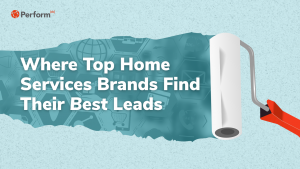- Affiliate Marketing & Performance Marketing Articles, Affiliate Marketing & Performance Marketing Blog, All, Performance Marketing
Why Niche Bloggers Don’t Always Drive Sales
- Perform[cb]

Countless brands come to performance marketing looking to work with upper-funnel partners, specifically influencers and niche bloggers. Bloggers and influencers are great for increasing brand awareness, but there has to be an even ratio of partnerships that drive awareness as well as conversions to successfully implement a full-funnel marketing strategy. The reality is, these small bloggers aren’t always able to drive the high number of sales that brands are anticipating due to the nature of their size and position in the buyers funnel.
From the advertiser’s side of things, it’s important to remember the marketing rule of seven, or that several touchpoints are needed to convert users. Utilizing niche bloggers is only one of the several touchpoints a consumer will interact with prior to converting. Performance marketing is based on a last-click attribution model, meaning the touchpoint that drives the last click to conversion is the partner that gets credit for that sale. Since bloggers sit in the awareness stage of the buyers funnel, they don’t often convert consumers on the spot – meaning they may drive buyers to a brand’s site, but won’t drive the sale itself. For this reason, many bloggers ask brands for higher commission rates, up-front flat fees, and/or a competitive promotion to offer their audience. These increased rates can cost brands more than a traditional publisher would, and in the end, the publisher may only drive a few sales.
If brands decide to work with these small publishers, the size of the blogger’s or influencer’s audience needs to be considered. Ignite Senior Sales Strategy Executive, Luisa Carneiro, says, “If a brand’s upper-funnel awareness is solely coming from micro influencers and super niche bloggers, brands aren’t going to see the results they’re looking for on a large scale. The buzz is only as a big their audience, so that’s why, at Ignite, we only work on a performance model with influencers who have at least 750,000 unique site views per month.”
On the flip side, the publisher end of things can get sticky. If bloggers aren’t knowledgeable about the performance model, a good amount of education and training is needed before they’re able to get up and running. Communication with these small publishers typically involves a lot of back and forth, including tracking platform integration and working to show them how to pull and use tracking links from the various platforms.
If an advertiser outsources their marketing efforts to an agency, the back and forth with small publishers can take up a lot of time and energy – time that the advertiser is paying for. In terms of a site volume recommendation for bloggers, Ignite finds it best to stick to sites with 750,000 monthly unique site views; but, more times than not, those sites will only drive a few sales per week. Ignite recommends brands who want to utilize an influencer strategy do so via content and influencer aggregators like Magic Links or RewardStyle, where bloggers are able to sign up and promote advertisers using the larger publisher platform.
The bottom line is clear: brands invest in performance marketing as a way to drive sales and incrementality. Investing in a healthy marketing mix will yield such success, but keep in mind that small publishers, such as niche bloggers and influencers, are only a piece of that mix. Brands who spend their time, resources, and money efficiently across numerous channels are known to see their desired return in the performance space.
Want to learn how to make bloggers and influencers work for your marketing? Reach out to Perform[cb] Agency now!








